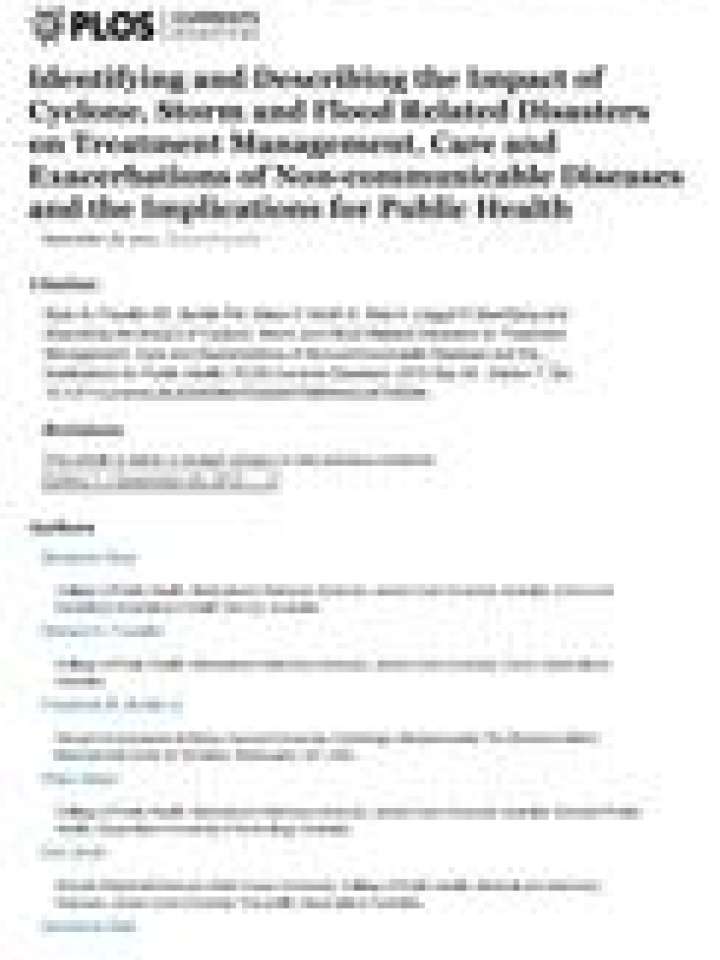Identifying and describing the impact of cyclone, storm and flood related disasters on treatment management, care and exacerbations of non-communicable diseases and the implications for public health
PLOS Currents Disasters, 2015, September 28, Edition 1, doi:10.1371/currents.dis.62e9286d152de04799644dcca47d9288
This article presents the results from a systematic review that identifies and describes the impact of cyclone, flood and storm related disasters on those susceptible to, or experiencing, non-communicable diseases (NCD). The NCDs researched were: cardiovascular diseases; cancers; chronic respiratory diseases; and diabetes.
Four electronic publication databases were searched with a date limit of 31 December 2014. The data was analyzed through an aggregation of individual papers to create an overall data description. The data was then grouped by disease to describe the impact of a disaster on treatment management, exacerbation, and health care of people with NCDs. The PRISMA checklist was used to guide presentation of the research.
Cyclone, flood and storm related disasters impact on treatment management and care for people with NCDs. Possible consequences include exacerbation of illness, complications or even death. There is now a need to expand traditional disaster approaches by public health to incorporate NCDs. This must be guided by the major NCDs identified by the World Health Organization and implemented in-line with the Sendai Framework for Disaster Risk Reduction: 2015-2030. This includes understanding all the factors that influence both direct and indirect (preventable) morbidity and mortality related to NCDs during and after disasters. Once achieved, disaster planners and public health professionals will be in a position to develop and implement effective mitigation strategies.
Explore further
